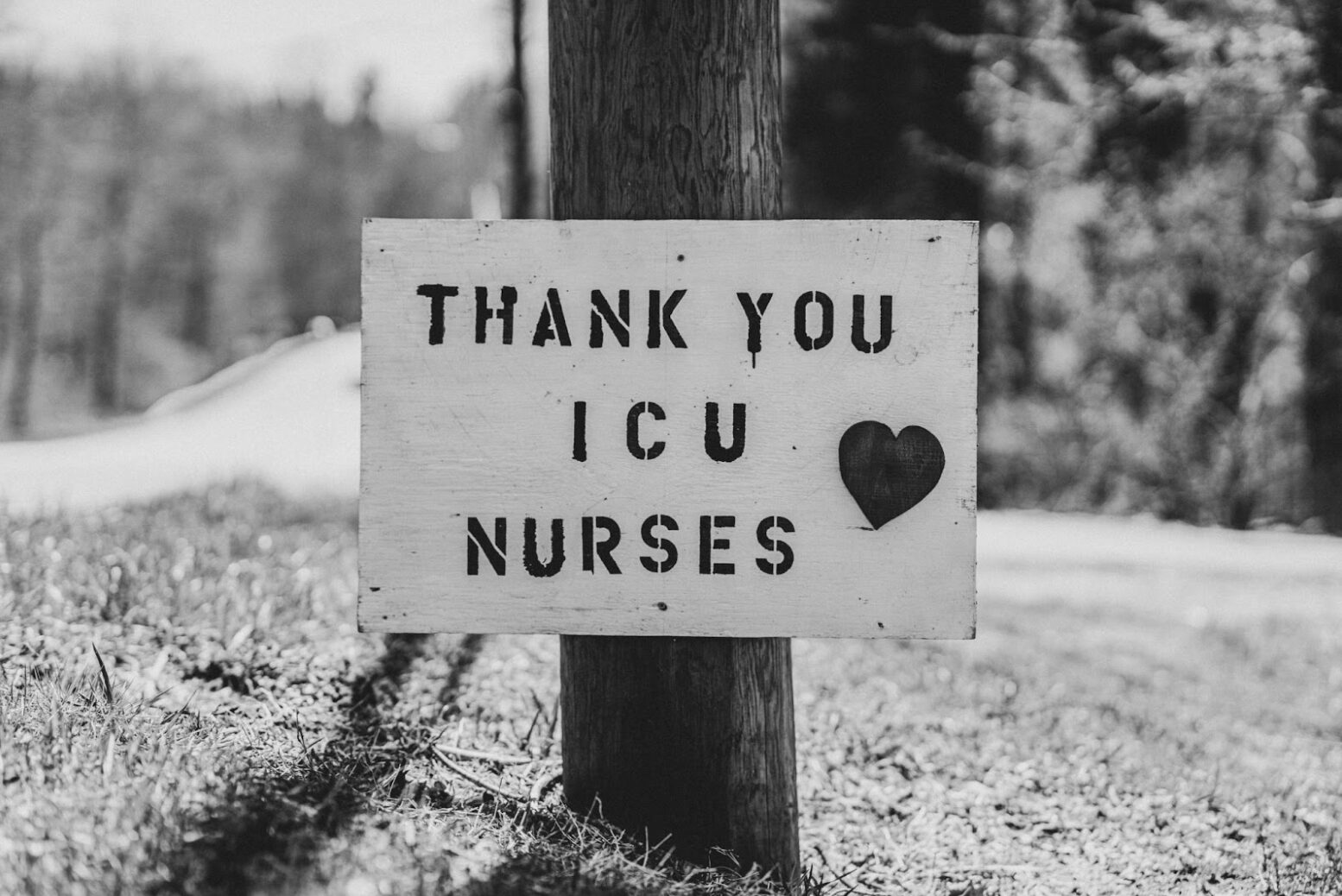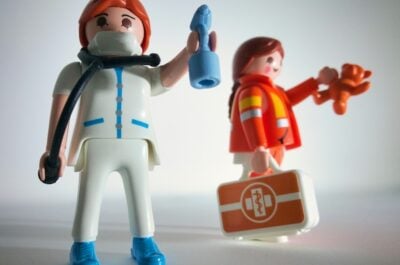In the bustling heart of any hospital or healthcare system, amidst the beeping monitors, hushed hallways, and the constant ebb and flow of patients and staff, there exists an invisible yet profoundly impactful force: morale.
It’s the collective spirit, the underlying enthusiasm, and the shared sense of purpose among healthcare professionals. When morale is high, the atmosphere hums with energy, teamwork flourishes, and the quality of patient care thrives. However, when morale dips, healthcare teams see decreased productivity, higher turnover, a less supportive environment, and ultimately reduce patient outcomes.
So how do we boost morale in hospitals and healthcare? We accomplish this by reducing burnout through employee recognition tools like eCards or group cards, powered by Kudoboard. In this article, we will explore the role morale and burnout play in the healthcare setting and how digital appreciation through eCards can help heal the spirits of our healthcare workers.
Let’s dive in. If you want to move faster, start creating eCards for Healthcare here.
How Burnout in Healthcare Affects Morale
Burnout is a state of emotional, physical, and mental exhaustion caused by prolonged or excessive stress. Burnout in healthcare is a pervasive problem among healthcare workers.
Why is this?
The halls of the hospital are filled with people going through hard days, which means stress is already naturally high. So, when healthcare workers experience these life-or-death moments continuously, it can place a prolonged toll on their mental and physical health. Then, when other factors like excessive workloads, administrative burdens, insufficient support, and a lack of control are added on, the propensity for burnout increases dramatically.
When someone experiences burnout, they will likely become detached, feel drained, develop a more cynical attitude, and become less productive. Here is how the symptoms of burnout affect employee morale both on an individual and group level.
- Emotional Exhaustion: Constant fatigue and stress drain an individual’s emotional resources, making them unable to feel empathy, joy, or enthusiasm for their work or colleagues. This exhaustion leads to a general sense of hopelessness and apathy, which is contagious and can bring down the entire team’s spirit.
- Depersonalization and Cynicism: Healthcare burnout leads to depersonalization, a state where individuals feel detached from their work and those they serve. They may develop a cynical or callous attitude, viewing colleagues and patients not as people but as objects or problems to be dealt with. This cynicism erodes trust and teamwork and can reduce positive patient outcomes.
- Reduced Sense of Accomplishment: Despite working tirelessly, individuals experiencing burnout feel that their efforts are pointless or unappreciated—this loss of purpose strips away the intrinsic motivation that drives high morale. When people don’t feel their work is making a difference, they lose the passion that fuels a positive and productive work environment.
- Increased Conflict and Reduced Collaboration: Burnout leads to heightened irritability, impatience, and a “short fuse” among staff. Instead of collaborating to solve problems, exhausted team members may withdraw or engage in unproductive blaming, leading to a breakdown in communication and a less cohesive environment. The decrease in collaboration directly harms morale by making the workplace stressful rather than supportive.
- Erosion of Trust and Communication: Effective healthcare relies on a team’s ability to trust one another. Burnout corrodes this trust. When healthcare workers are overwhelmed, they may start to make more mistakes or fail to communicate critical information due to exhaustion. These missteps can lead to a feeling that team members cannot rely on their colleagues to perform their duties effectively. As a result, communication becomes more guarded and less open, creating a dynamic where individuals feel isolated and unsupported, directly lowering morale.
In the end, burnout impacts not only the morale of the individual but also disrupts the entire healthcare ecosystem. To combat the impact burnout has on healthcare morale requires a fundamental culture shift–one that prioritizes recognition, appreciation, and a sense of shared community.

How Recognition and eCards Improve Morale in Healthcare
Those in healthcare deserve to know that they are appreciated. They dedicated and sacrificed years of their life to learn about disease and how the human body works so that they could help us lead healthier and happier lives. They are the ones called when tragedy strikes to try to save the situation. And so often, they save lives without a word of thanks.
Here is where digital appreciation comes in. Virtual employee appreciation through eCards provides a space for colleagues, patients, administrators, and others to say “thank you.” While these moments of gratitude may not eradicate burnout, they can effectively improve morale, and here is how:
- Directly Combats Burnout and Emotional Exhaustion: By providing a consistent stream of positive feedback, digital appreciation acts as an emotional counterbalance to the daily stresses of the job. It helps healthcare workers to refuel their emotional reserves and reduce feelings of exhaustion.
- Reinforces a Culture of Kindness and Compassion: Virtual employee appreciation platforms, by their very design, encourage a positive and supportive workplace. When staff members see their colleagues recognized for acts of compassion, it reinforces these behaviors. It encourages others to act similarly, creating a virtuous cycle of kindness that directly improves morale.
- Enhances Interdepartmental Collaboration: In large hospital systems, different departments can feel isolated. Digital appreciation can bridge this gap by allowing a nurse in the ICU to easily thank a lab technician or a surgeon to praise a floor nurse. This communication among departments promotes better communication and a more cohesive system-wide team spirit.
- Provides a Sense of Purpose and Meaning: Burnout often stems from a feeling of reduced accomplishment. Digital appreciation, especially when tied to specific patient outcomes or positive feedback, directly connects an employee’s actions to a meaningful result. This powerful link reinforces their sense of purpose and reignites their passion for their work.
- Cultivates an Environment of Psychological Safety: When staff members feel comfortable giving and receiving appreciation, it creates an environment of psychological safety. This open and supportive atmosphere encourages team members to speak up, share ideas, and admit mistakes without fear of judgment, which is crucial for both morale and patient safety.
- Encourages Peer-to-Peer Recognition: Digital systems make it simple for colleagues to acknowledge each other’s hard work. Peer-to-Peer recognition fosters a culture of mutual support and camaraderie, which is a powerful antidote to the isolation and stress that can lead to burnout.
- Accessibility and Inclusivity: Unlike physical employee appreciation cards or bulletin boards, digital appreciation can be accessed by staff regardless of their location or work schedule. This accessibility ensures that every member of the team, including those on night shifts, in satellite clinics, or on different floors, feels included and valued.
- High Visibility and Public Recognition: Many virtual recognition platforms allow for public shout-outs via social media or other sites, which can create a positive space for patients to share their positive experiences.
Read More: Why Ecards beat Bulletin Boards for Hospital Staff Recognition

How to Get Started with Digital Appreciation and eCards in Your Hospital
Implementing a new system in a large healthcare organization can be a challenge. But with a strategic approach, it can be a seamless and successful process.
Form a Diverse Team
Gather representatives from different departments (HR, IT, Nursing, Administration) to lead the initiative. By having a variety of departments and organizational levels involved in the planning and execution of digital appreciation, you will ensure that the programs put in place will match the needs of all hospital staff members.
Choose the Right Platform
Research and select an eCard platform that is easy to use, customizable, and can be integrated with existing hospital communication systems. Look for features like group cards, public boards, and data analytics that meet the needs of your organization.
For example, part of your employee recognition plan is to include patient comments. In that case, your organization will need a platform that can provide a link or another method for patients to access the eCard.
Communicate and Educate
For employee appreciation to be successful, the participants need to know what to do and what to expect. Launch the program with a clear and enthusiastic communication plan. Host a kick-off event, send out an email campaign, and provide simple tutorials on how to create an eCard or how to use the platform. Emphasize that this is a peer-to-peer initiative, not just a management tool.
Pilot the Program
Start with a pilot group, such as a specific unit or department, to test the platform and gather feedback. Launching a pilot program allows for fine-tuning before a full-scale rollout.
Lead by Example
Encourage leadership at all levels to be early and enthusiastic adopters. When staff see their managers and directors using the program, it sets the tone for the entire organization. Leadership examples can also demonstrate the types of recognition that HR is looking for, as well as the personalization options available through the selected software.
Promote and Publicize Success Stories
Regularly share stories of appreciation. Highlight a “Card of the Week” in the hospital newsletter or on a digital sign in break rooms. Showing examples reinforces the program’s value and encourages continued participation. It also gives others who may be struggling to participate inspiration on how they can contribute.
Gather Feedback
The program is not a one-and-done deal. Continuously gather feedback from staff, track the key metrics you defined initially, and make adjustments as needed to ensure the program remains relevant and practical. Nothing will diminish a recognition program more than when employees feel like it is more of a burden to participate than a reward.
12 Ways to Use eCards in Healthcare
Now that we’ve covered the why and the how, it is time to get inspired. The great thing about digital appreciation through eCards is that they are a simple, personalized, and creative way to show gratitude.
So to help get you started, here are some ways to use online cards in a Healthcare setting:
“Caught You Caring” Cards: This is an excellent way for managers and colleagues to recognize specific instances of outstanding patient care, teamwork, or compassion. The message can highlight a particular action, such as “Thank you for the extra time you spent comforting that patient’s family. It made a huge difference.”
Milestone Celebrations: Use electronic cards to celebrate professional and personal milestones, such as work anniversaries, birthdays, promotions, or a team member completing a certification. A group eCard signed by the whole department for any employee milestone can be a meaningful gesture.
Team Celebration: When a team completes a project, receives a positive patient satisfaction survey, or hits a key performance metric, a group eCard is a great way to celebrate their collective effort.
“Just Because” Cards: Sometimes, the most impactful appreciation is for no specific reason at all. A simple “Thinking of you and your hard work today!” can brighten a colleague’s day and make them feel seen.
Patient and Family Appreciation: Some eCard platforms offer a way for patients and their families to send a personalized message of thanks to the staff who cared for them. A QR code on a discharge summary or in a waiting room can direct them to a form to submit a message. Patient appreciation directly demonstrates the impact the provider’s job has on the people they take care of.
Professional Development Congratulations: When a team member achieves a certification, completes a training program, or presents at a conference, a digital card acknowledging employee achievements shows support and encourages continued growth.
“Thinking of You” Cards: During challenging times, such as a personal illness or a complex patient case, a simple online card offering support and expressing care can make a significant difference.
“You Make a Difference” Notes: These eCards can be used to provide general encouragement and remind staff members of the vital role they play in the lives of patients and their families.
Peer-to-Peer Thank You eCards: Encourage staff members to send digital cards to each other to offer support, share encouragement, or simply let a colleague know they are appreciated.
Themed Appreciation Weeks: During events like Nurses Week or National Doctor’s Day, themed eCards with celebratory messages and fun designs can enhance the sense of occasion.
Welcome New Hires: A “Welcome to the Team” electronic greeting card signed by the entire department can make a new employee feel immediately included and valued.
Post-Shift “High-Fives”: After a particularly stressful or busy shift, managers or colleagues can send a digital recognition eCard with a message like, “That was a tough one. Thanks for your amazing work and teamwork tonight!”
Acknowledging Personal Milestones: Another powerful and personal way to use eCards in healthcare is to recognize and celebrate key life events outside of work. In the high-stress environment of a hospital, showing you care about an employee as a whole person—not just a healthcare professional—can significantly boost morale. An eCard can be used to congratulate a team member on the birth of a child, a marriage, or a significant personal achievement, such as running a marathon.

Boost Morale in Your Hospital with Kudoboard
As you look to boost morale in your hospital through eCards and other virtual employee appreciation tools, the right platform can make all the difference, and this is where Kudoboard shines.
Kudoboard is more than just a digital greeting card platform; it’s a powerful and intuitive platform designed to appreciate and celebrate together, no matter their location. It transforms a simple thank you into a collaborative and vibrant expression of gratitude through heartfelt messages, photos, and GIFs.
From a doctor receiving a Kudoboard on Doctor’s Day filled with praise from their nurses and colleagues after a successful procedure, or a nurse finding a board brimming with messages of support from their unit after a particularly long week, the ability to add multimedia, from a short video message to a silly meme, makes the appreciation feel genuine and tailored to the unique bonds within a healthcare team.
Kudoboard’s features, including private boards for sensitive situations, public boards for broad recognition, and easy sharing options, make it the perfect tool to integrate into any hospital’s existing appreciation program.
Final thoughts on improving healthcare morale with eCards
The issue of low morale in healthcare is not just a human resources problem; it is a direct contributor to burnout. The strategic use of digital appreciation offers a simple yet powerful way to address these systemic issues. It provides an accessible, consistent, and impactful way to remind those who dedicate their lives to saving us how much we appreciate their care.
By making gratitude a visible and constant presence, we can begin to turn the tide against cynicism and exhaustion and instead build a more resilient, motivated, and ultimately healthier healthcare community one eCard at a time.




